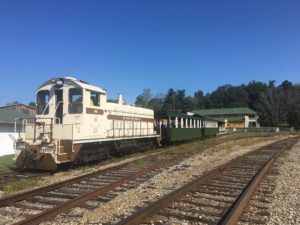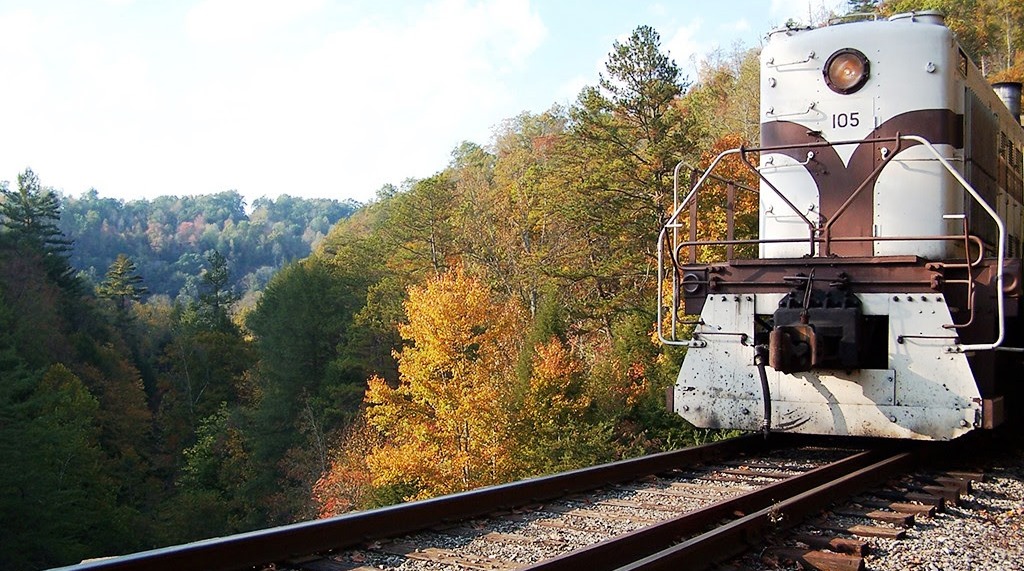On September 20, 2018, U.S. Secretary of Commerce Wilbur Ross announced that the Department’s Economic Development Administration (EDA) will award $3.4 million in grants to the Commonwealth of Kentucky to help revitalize the economy of Stearns, and to support industrial redevelopment in Hazard.
An Abandoned Mine Lands (AML) grant totaling $1.1 million will be used to renovate the infrastructure of the Big South Fork Scenic Railway, which is a popular historic tourist attraction. The McCreary County Heritage Foundation received a $2 million grant from the U.S. Economic Development Administration.
 Stearns and the Big South Fork Scenic Railway have a very rich history rooted in the coal mining and logging industries. Although the mining and logging camps have long been closed, we are working hard to preserve the memory of our founding ancestors who contributed so much to American industry.
Stearns and the Big South Fork Scenic Railway have a very rich history rooted in the coal mining and logging industries. Although the mining and logging camps have long been closed, we are working hard to preserve the memory of our founding ancestors who contributed so much to American industry.
In 1902, Justus S. Stearns of Ludington, Michigan bought 30,000 acres of virgin timberland in southern Kentucky. When coal was discovered soon afterwards, the Stearns Coal & Lumber Company was established. The company built the town of Stearns to serve as the hub of a logging and mining empire that would control over 200 square miles of land, build the Kentucky & Tennessee Railway, erect the first all electric sawmill in the U.S. and employ over 2,200 people living and working in 18 coal and lumber camps.
Most of the buildings in the Stearns business district were painted in company colors – sage green with white trim. The Company office headquarters building and surrounding Company houses were painted white with dark green trim. Residents enjoyed services provided by the Company, such as water and sewage, electricity, and steam heat for their homes. Recreation amenities included a golf course, tennis courts, pool hall, and baseball field for their leisure time.
The Kentucky & Tennessee Railway once stretched over 25 miles into the Big South Fork River valley and operated 12 steam locomotives. It served as the primary passage not only for timber and coal, but also for workers and supplies going to camps along its line.
The K&T, like many shortline railroads operated steam locomotives several years after the mainline railroads had switched to diesel power. One of the more notable steam locomotives, Southern Railway No. 4501 was purchased by the K&T, re-lettered K&T No. 12, and operated until 1964. The only original K&T steam engine still in existence today is the K&T No. 10. Both No. 4501 and No. 10 are now located at Tennessee Valley Railroad Museum in Chattanooga.
In the 1950’s, the Stearns Company closed several coal mines and the K&T discontinued passenger service. By 1976, the Stearns Coal & Lumber Company had sold its mining operations to Blue Diamond Coal Company. The Company’s vast, damaged land holdings were transferred to the U.S. Forest Service, the Big South Fork National River & Recreation Area, and to private ownership.
Coal mining ceased along the K&T in 1987. Today, the McCreary County Heritage Foundation, Inc., a non-profit organization, has taken on the task to preserve, protect, and interpret the rich history of one of the few company towns in America still surrounded by its coal, lumber, and railroad roots.
The National Historic District of Stearns, McCreary County Museum, and Big South Fork Scenic Railway provide the venues necessary for the Heritage Foundation to keep this thriving history alive.
Ross said that the goal of this new funding is to put “…former coal industry employees back to work. These projects will help spur innovation, aid workers, and stimulate economies which once solely relied on coal.”
“I extend my congratulations to the McCreary County Heritage Foundation for being awarded the necessary resources to revitalize some of Kentucky’s treasured locations, particularly those listed on the National Register of Historic Places,” said Senator Mitch McConnell. “In this historic coal community, an injection of federal funding can help increase tourism and spur economic growth around the Big South Fork Scenic Railway. As these Kentuckians continue their work to restore the beauty of these heritage sites, I was proud to do my part to help.”
“Joining with leaders in Eastern Kentucky, I was also proud to support an investment of federal resources to promote economic growth in the City of Hazard,” continued McConnell. “By equipping the Coal Fields Regional Industrial Park with a new natural gas connection, the community will continue to attract new opportunities that support job creation. In Kentucky’s struggling rural areas, I am committed to standing with those looking to encourage economic development, and I would like to commend the Hazard community for this award.”
Details on the new EDA investments:
- McCreary County Heritage Foundation will receive $2 million to renovate and revitalize the downtown historic area in Stearns. This project is aimed at expanding the community’s tourism industry to increase economic opportunity and activity.
- The City of Hazard will receive $1.4 million to provide a natural gas line directly to the Coalfields Regional Industrial Park, to support business growth and expansion. According to grantee estimates, this project is expected to create 1,500 jobs and spur $100 million in private investment.
These projects were made possible by the regional planning efforts led by the Lake Cumberland Area Development District and the Kentucky River Area Development District, respectively. EDA funds the Lake Cumberland Area Development District and the Kentucky River Area Development District to bring together the public and private sectors to create an economic development roadmap to strengthen the regional economy, support private capital investment, and create jobs.
These projects are funded under the 2018 Assistance to Coal Communities (ACC 2108) program, through which EDA will award funds on a competitive basis to assist communities severely impacted by the declining use of coal through activities and programs that support economic diversification, job creation, capital investment, workforce development, and re-employment opportunities.
The mission of the U.S. Economic Development Administration (EDA) is to lead the federal economic development agenda by promoting competitiveness and preparing the nation’s regions for growth and success in the worldwide economy. An agency within the U.S. Department of Commerce, EDA makes investments in economically distressed communities in order to create jobs for U.S. workers, promote innovation, and accelerate long-term sustainable economic growth.
Photos courtesy of Big South Fork Scenic Railway.

